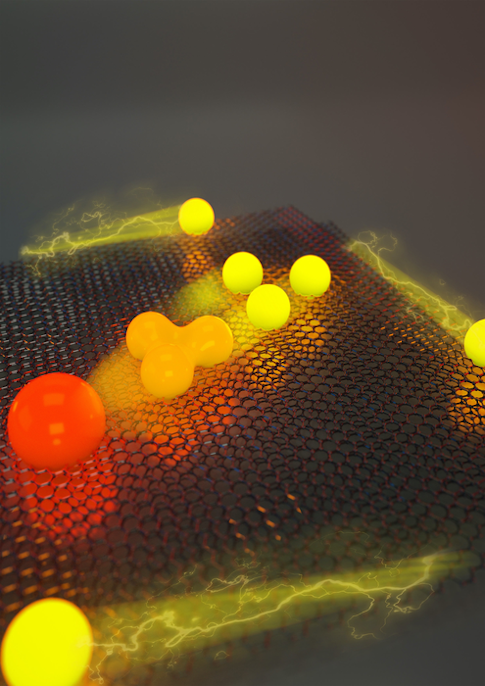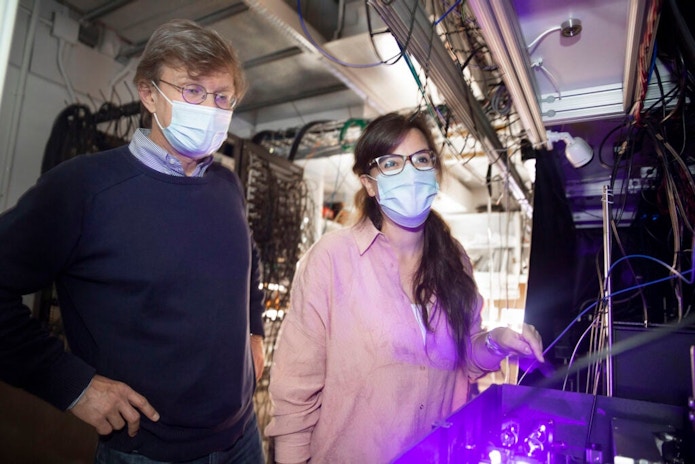Theorists and Experimentalists Join Forces to Explore Nature’s ‘Third Kingdom’ of Particles

Collaborations between theorists with the Simons Collaboration on Ultra-Quantum Matter (UQM) and experimentalists have yielded new insights into anyons, the so-called third kingdom of particles. The researchers report their findings in papers published in Science and Nature.
All the universe’s particles behave as either bosons (such as photons) or fermions (such as protons, neutrons and electrons). When these particles team up, though, they sometimes act as a ‘quasiparticle.’ And some quasiparticles exhibit behavior that defies either categorization. These quasiparticles, called anyons, only exist in flat systems and have properties that are less restricted than those of bosons or fermions.
The unique properties of anyons could make them powerful tools for building quantum computers. But producing anyons is incredibly tricky. Despite early work by Jon Leinaas and Jan Myrheim in 1977 and later exploration by Frank Wilczek in 1982, the first anyons weren’t experimentally confirmed until 2020. Even then, producing the quasiparticles required temperatures near absolute zero and a strong magnetic field. Those extreme requirements hamper the potential use of anyons in quantum computers. Since then, theorists and experimentalists have been hunting for more accessible ways to produce the sought-after quasiparticles.
A new research collaboration combining experiment and theory has found just such an approach. The work was led by Harvard University’s Amir Yacoby and UQM principal investigator Ashvin Vishwanath. They and their colleagues produced anyons in a twisted material consisting of two graphene layers. The process required only a relatively weak magnetic field, the researchers report December 15 in Nature. Furthermore, the researchers say their findings suggest such a feat may be possible without any magnetic field at all.
“This experiment was doubly remarkable since it both brings us much closer to realizing anyons in the absence of a magnetic field and does so in the wonder material twisted bilayer graphene, which also shows superconductivity and other interesting properties,” Vishwanath says. “The dynamic interplay between theory and experiment, along with the advent of these new synthetic quantum systems, makes this an exciting time to be in the field.”
In a different collaboration, UQM postdoc Ruben Verresen of Harvard and colleagues produced a theoretical blueprint for creating a sought-after phase of matter called a quantum spin liquid that can host anyons. First predicted nearly 50 years ago, quantum spin liquids contain atoms that are deeply quantum-entangled with one another even over long distances. The researchers published their blueprint in Physical Review X in July 2021.

Leveraging Verresen’s blueprint, experimentalists assembled a lattice of ultracold atoms, held in place by lasers, that showed the hallmarks of a quantum spin liquid. The setup allowed the researchers to measure all the atoms at once, which was essential to identifying the fingerprints of the exotic state of matter.
“When we ran the numerical simulations, we were very excited to see all the elements click together just right,” Verresen says, “and it was really amazing to see the experimental team, spearheaded by Giulia Semeghini, implement it in the lab in a matter of months!”
The results were published in the December 2 issue of Science. Verresen, Vishwanath and UQM principal investigator Subir Sachdev of Harvard were co-authors.
“If I take the entire history of ultracold atomic experiments, it probably was one of the most impressive and groundbreaking experiments in the field,” Ehud Altman, a condensed matter theorist at the University of California, Berkeley, told Quanta Magazine.


